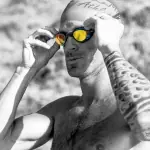
Like most triathletes, you invest hours in the water each week, yet your race results still leave something to be desired. How can this be? Swimming is swimming is swimming (right?), and your time in the water should produce faster times. If only we could wave a nautical wand and grant this wish for all athletes, but unfortunately the formula for swimming success is more complicated than simply slogging lap after lap in a pool.
If only we could wave a nautical wand and grant this wish for all athletes.This year, allow yourself to approach swim training with a more comprehensive structure—an integration of biomechanics focused on activities both in and out of the water.
Don't Fear the Time Trial
Humans thrive off of progress—the feeling of improving and celebrating success. Now, success is certainly defined subjectively, and establishingQuick Tip
Having a clear, comprehensive structure in and out of the water will help you realize gains on the swim leg.
Plan a 200-yard or 400-yard time trial (or both) once a month to help you recognize progress. If your times plateau or begin to get slower, don't worry. Use this objective data as insight into how you can better adjust your training.
It's easy to settle into your comfortable pace for the bulk of your workouts. However, this will condition you to only work within that given effort zone. To raise your performance ceiling, incrementally challenge yourself to do your 100 repeats—or whatever your prescribed set is—5 seconds faster than normal. Notice how the quality of your workout changes. This is progress.
Guidance is Golden
It's a distinct challenge to maintain a clear, unbiased understanding of yourself. This is especially true when trying to self-diagnose and correct your swim stroke. Blindly (literally) guessing if you're moving in a certain way or properly executing specific mechanics is not only frustratingly difficult to do, it's also incredibly counter intuitive at times. What something feels like in the water is consistently different than what it actually looks like. With all of this said, hiring a coach or a friend to take a look at your stroke is paramount to your aquatic success.Recruit a local coach with open water swimming experience to insure they can help instill mechanics and techniques unique to triathlon. If on a tight budget, ask a friend to take some video of you swimming at the pool. Likely humbling, and most definitely educational, being able to see each aspect of your stroke in real time or slowed down for a closer look will help you connect the dots and produce the changes you want.



